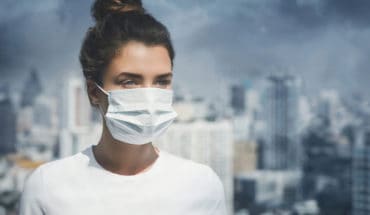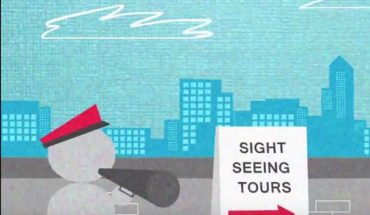How do you stay safe outdoors during the Pandemic? Emma Hammett of First Aid For Life advises how to stay safe as Covid-19 lockdown eases and outlines 19 possible symptoms to look out for.
Lockdown is gradually easing in the UK and we welcome the cautious reopening of many non-essential business. Covid-19 guidance is now more reliant on the general public acting sensibly. It is therefore more important than ever that you are have reliable information to navigate life safely as it adjusts to a new normal. Staying safe will prevent new outbreaks of Covid-19 and save lives.
Here’s our top tips for how to stay safe as lockdown eases:
Regular and proper hand washing
At the beginning of the Covid-19 outbreak there was considerable focus on hand washing, and for good reason. Hand washing is one of the most effective and easiest ways we can protect ourselves and others from Covid-19. Washing hands thoroughly with soap and hot water removes traces of the virus, stopping us spreading it to the surfaces we touch and preventing us from becoming infected ourselves.
Dry and chapped hands are often symptoms of intense washing. Read our guide for dealing with chapped hands here.
Plan your visits carefully
As pubs, shops and entertainment venues are reopening, many people are flocking to congregate and make up for lost socialising – the virus has not gone away and remains a palpable risk. Sadly, many of the newly opened bars have had to shut once more as it becomes apparent that someone in the crowd was infected with coronavirus. Remember that it is possible to spread the virus, if you are infected, even if you have no apparent symptoms. It is vital to take sensible precautions, remain at a social distance whenever possible, wash hands and wear a mask.
The same goes for visiting friends and family. It is important to plan journeys carefully. Avoid public transport and drive, cycle or walk if possible. Due to the proximity and shared surfaces, public transport is a perfect place for viruses to spread. Limiting your time on public transport will reduce your likelihood of catching the virus and of you spreading it further.
Check there are specific guidelines in place for the place you are visiting, they may have certain policies in place, regarding mask wearing and advance booking systems.
The Independent has compiled a useful general guide for the following:
Theme parks and amusement arcades
Libraries and community centres
Outdoor sports and playgrounds
Wear a mask when you can’t keep socially distant
Wearing a face covering in public has now become compulsory for people travelling by bus, train, ferry or plane in England (with a few exceptions, which can be found here). This is a precautionary measure to help slow the transmission of COVID-19 on the public transport and in public places. It is vital to cover your nose and mouth with the mask but be aware that coronavirus can also enter through the eyes. Avoid touching your face when you have a mask on and wear glasses if you need them. We also recommend wearing a face covering in any situation where you are indoors and can’t keep at least 1m from people outside of your family bubble.
It is also a legal requirement to wear a face mask in GP surgeries and hospitals.
To find out more about the 1m+ rule, click here.
Be aware of all the symptoms of COVID-19
The UK Government has only officially stated that there are three symptoms of COVID-19; fever, persistent cough and loss of smell and taste (anosmia). But according to the research from the COVID Symptom Study from Kings College London, there are in fact 19 symptoms related to COVID-19. This seems like a lot, but it’s important to know all the potential symptoms because if you or someone you know is experiencing any of these it might mean you or they have COVID and therefore need to stay at home.
Read our article here on what to do if you think you have coronavirus.
The most important are those that often occur in the first two days, which can be confused with other causes. These include headache, sore throat and muscle pains. The classic NHS approved symptoms typically occur at days 3-4 although there is wide variation.

The chart above indicates the % of people reporting initial symptoms, having reported themselves as well the previous day. However, it is not known how many of these people went on to develop Covid-19 as most people in the UK are not currently tested.
Below you will find the 19 symptoms roughly in the order as to how reliable these symptoms are at predicting that someone could be developing Covid-19:
- Loss of smell/taste
- Persistent cough
- Fatigue
- Loss of appetite
- Skin rash
- Hives
- Fever
- Severe muscle pain
- Shortness of breath
- Diarrhoea
- Delirium/confusion
- Abdominal pain
- Chest pain
- Hoarse voice
- Eye soreness
- Sore or painful throat
- Nausea or vomiting
- Headache
- Dizziness or light headedness
If you have any of these symptoms we recommend that you observe strict self isolation whilst you wait to be tested to find out whether or not you are infected with COVID-19. Users of the COVID Symptom Study app will be invited to receive a test if they begin to start logging that they are feeling unwell after logging previously being healthy.
Here is a useful article about how indicative these symptoms are as to whether you go on to develop covid19.
Test yourself for Covid-19 at home
If you are unsure whether or not you have some of these symptoms, there are a few simple ways you can check yourself at home. Things to ask yourself include:
Can you smell certain cupboard staples like coffee, lemon or mint? If you struggle to smell these you could be presenting with loss of taste or smell a key symptom of COVID-19.
Do you have a temperature? You can check yourself by using an at home thermometer or checking how the skin feels to the touch.
Do you have a rash? One of the early signs of COVID-19 is skin rashes, it’s a good idea to check your body daily, particularly your chest or back and your toes.
Pay attention to symptoms that are very unusual for you. For example if you never get headaches -then it will be more suspicious than if you suffer regularly.
Home tests are very useful however the results are not instant. If you are able to get a home test, we take you through everything to expect here.
Stay connected during Covid-19
Don’t do anything you don’t feel comfortable doing. Speak to friends and family for advice and collective planning. Join our Stay Safe Community on Facebook to ask any questions! Stay safe.
- What is a seizure? - 13th March 2025
- Febrile Convulsions and Seizures in Children - 13th March 2025
- Why women are less likely to receive CPR or survive cardiac arrest - 6th March 2025






